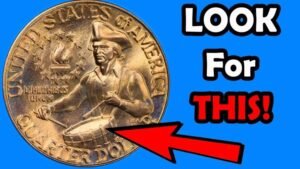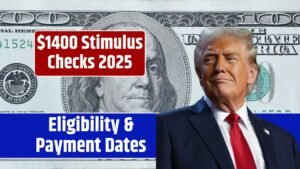Have you ever wondered if an old nickel in your collection could be worth millions? The 1913 Liberty Head Nickel is one of the rarest coins in the world, with only five known to exist. Recently, these coins have sold for jaw-dropping prices, like $4.56 million at auction, making them a dream for coin collectors. This article explains the nickel’s story, why it’s so valuable, and how to spot one in simple terms. If you’re curious about coin collecting or want to check your change for treasure, keep reading to learn about this legendary coin.
What Is the 1913 Liberty Head Nickel?
The 1913 Liberty Head Nickel is a five-cent coin that was never meant to be made. From 1883 to 1912, the U.S. Mint produced Liberty Head Nickels, which show a woman’s face representing liberty. In 1913, the Mint switched to the Buffalo Nickel design, and no Liberty Head Nickels were supposed to be made that year. But somehow, five of these coins were created, making them super rare and a collector’s prize.
The Coin’s Design
Designed by Charles E. Barber, the Liberty Head Nickel has a simple but elegant look. The front (called the obverse) shows Lady Liberty with a crown that says “LIBERTY” and 13 stars for the original U.S. colonies. The back (called the reverse) has a Roman numeral “V” for five cents, surrounded by a wreath of corn, wheat, and cotton. The 1913 version looks the same but is special because it was made in secret.
Why Is the 1913 Liberty Head Nickel So Valuable?
This nickel’s value comes from its rarity, mysterious history, and high demand among collectors. Here’s why it’s worth so much:
- Extremely Rare: Only five 1913 Liberty Head Nickels are known to exist, with two in museums and three in private hands.
- Unknown Origin: No one knows for sure how these coins were made, but many think they were struck secretly at the Mint.
- Huge Auction Prices: One sold for $3.7 million in 2010, and another for $4.56 million in 2018, showing their growing value.
Owning one is like holding a piece of history with a touch of mystery, which drives collectors wild.
The Mystery Behind Its Creation
The story of the 1913 Liberty Head Nickel is like a detective novel. In 1919, a former U.S. Mint worker named Samuel Brown showed one at a Chicago coin club. By 1920, he revealed all five at an American Numismatic Association event. Some believe Brown secretly made these coins at the Philadelphia Mint in 1913, possibly taking them before anyone noticed. He even placed ads offering $500 for any 1913 Liberty Head Nickels, which might have been a trick to make them seem legitimate.
After Brown sold the coins in 1924, they passed through famous collectors, including Colonel E.H.R. Green and King Farouk of Egypt. Today, two are in museums (the Smithsonian and ANA Money Museum), and three are privately owned. One coin, called the Walton specimen, was lost for years until it was rediscovered in 2003, adding to the nickel’s legend.
How to Identify a 1913 Liberty Head Nickel
Finding a real 1913 Liberty Head Nickel is nearly impossible since only five exist, and fakes are common. Here’s how to check your coins:
- Look at the Year: Check for “1913” on the front. Most Liberty Head Nickels are from 1883 to 1912.
- Check the Design: The front should show Lady Liberty, and the back should have a “V” with a wreath.
- Note the Quality: Two of the five are “proof” coins (extra shiny, made for collectors), while three are standard.
- Get Expert Help: Always have a suspected coin checked by professionals at PCGS (Professional Coin Grading Service) or NGC (Numismatic Guaranty Corporation). Fakes are often made by altering dates, like changing 1918 to 1913.
Here’s a table comparing regular and 1913 Liberty Head Nickels:
| Feature | Regular Nickel (1883–1912) | 1913 Liberty Head Nickel |
|---|---|---|
| Year | 1883–1912 | 1913 |
| Quantity Made | Millions | Only 5 known |
| Design | Liberty Head with “V” | Same, but unauthorized |
| Value | $1 to $100 | $1 million to $5 million |
If you think you have one, don’t clean it—cleaning can ruin its value. Take it to a professional for verification.
Cool Facts About the 1913 Liberty Head Nickel
This coin has some wild stories. One appeared in a 1973 Hawaii Five-O episode called “The $100,000 Nickel,” where thieves tried to steal it. Another, the McDermott specimen, was carried around by its owner to show off at bars, giving it unique scratches. It’s now in the ANA Money Museum. The Eliasberg specimen is the best-preserved, graded at PR-66 (proof, high quality) by PCGS and NGC, making it a top prize. These tales make the coin even more exciting for collectors.
Tips for Starting Coin Collecting
Ready to hunt for rare coins? Here’s how to get started:
- Search Old Collections: Check family coin jars, old wallets, or inherited collections.
- Learn the Basics: Read books or visit websites like PCGS or NGC to understand coin values.
- Store Coins Safely: Use protective holders to prevent scratches or damage.
- Verify with Experts: Have coins graded by PCGS or NGC to confirm they’re real.
- Sell Smart: Use trusted auction houses like Heritage Auctions or Stack’s Bowers for valuable coins.
Coin collecting, or numismatics, is a fun way to explore history and maybe find a fortune.
Common Questions About the 1913 Liberty Head Nickel
Here are simple answers to popular questions:
- Can I find one in my change? Very unlikely, as most are in museums or private collections.
- Are fakes common? Yes, many fakes are made by altering other years. Always verify with experts.
- Why is it so valuable? Its rarity (only five exist) and mysterious story make it a collector’s dream.
These answers help beginners understand the coin’s appeal.
Key Terms Explained in Simple Words
Coin collecting has some tricky words. Here’s a table to make them easy:
| Difficult Word | Easy Explanation |
|---|---|
| Numismatics | Collecting and studying coins. |
| Proof Coin | A shiny coin made specially for collectors. |
| Minting | The process of making coins at a mint. |
| Obverse | The front side of a coin (like “heads”). |
| Reverse | The back side of a coin (like “tails”). |
| Grading | Checking a coin’s condition and giving it a score, like PR-66 (proof, high quality). |
| Authenticate | Proving a coin is real, not fake. |
This table clears up confusing terms for new collectors.
Conclusion: Your Nickel Could Be a Million-Dollar Find
The 1913 Liberty Head Nickel is a legendary coin that captures the imagination with its rarity and mysterious past. With only five known and prices reaching $4.56 million, it’s a true treasure in the world of coin collecting. By checking your old coins for the 1913 date and Liberty Head design, you might stumble on something extraordinary. Even if you don’t find one, the thrill of the hunt connects you to history and the excitement of discovery. Start digging through your coin collection today—your next nickel could be worth millions! Coin collecting is a rewarding adventure, so grab a magnifying glass and start exploring.




